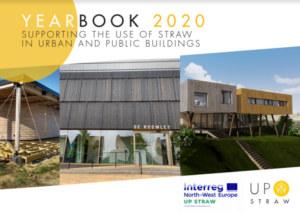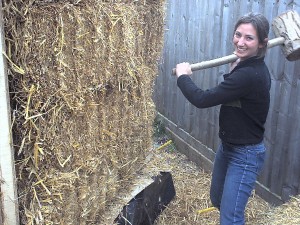Review: A Complete Guide to Straw Bale Building by Rikki Nitzkin and Maren Termens

Sophie Paterson reviews a valuable new addition to any natural building bookshelf in the form of A Complete Guide to Straw Bale Building by Rikki Nitzkin and Maren Termens, published by Permanent Publications earlier this month.
A complete guide to straw bale building in 320 pages? It’s an ambitious task which has been put to the test by Rikki Nitzkin and Maren Termens in a 2020 English-language update to their 2016 second edition of Casas de Paja: Una guia para autoconstructores.
This time aiming to broaden its scope to serve self-builders, professional builders and designers, the 28 chapters of A Complete Guide to Straw Bale Building cover everything from the reasons behind building with straw bales to details of structural design and testing. The five core sections – Introduction, Before Building, Building Systems, Building, and Finishes – take the reader on a refreshingly honest step-by-step journey through a wide range of approaches to straw bale construction, be it infill, load-bearing, panel-based or retro-fit wrapping.
It is a journey which in many ways mirrors Nitzkin’s own journey from self-builder to practitioner and trainer, and her personal insights and reflections interspersed throughout the text ensure that, while backed by theory, it remains rooted in practice. Permaculture principles and a commitment to the belief that those who will inhabit a space can, and indeed should, be involved in the design and building process shine through. Together, Nitzkin and Termens aim to inspire enthusiasm, confidence and competence through imparting a wealth of practical knowledge.
Significant care has been taken to provide the ‘why’ behind the ‘what’ and ‘how’ of each principle outlined, and there is a focus on simple solutions, while also acknowledging the more industrial alternatives which have developed in line with larger, commercial projects. There is ample recognition that it is an ever-evolving field, with myriad variations. A maze of terminology is demystified by way of a helpful glossary, while a FAQs section tackles the most common straw bale construction myths. A further valuable inclusion are the appendices, in particular plans for a mini straw bale building which serve as an enticing call for any aspiring builder to dip their toes in the water.

Surely one of the key challenges for any comprehensive guide seeking international reach is how to strike a balance of information relevant to different regions, climates and building codes – it understandably being a nigh on impossible task to cover everything, everywhere. In this respect, the wide range of examples, images and testimonies to be found within the book can be commended, supported by a wealth of resources and information for further investigation in the appendices. It is also encouraging to see space given to tackle the tricky topic of common mistakes and how to fix, or, best of all, avoid them.
In all, Nitzkin and Termen’s unashamedly conversational, open and honest approach to their field makes for a vibrant introduction to the world of straw bale building which clearly holds such joy for them. The best part? We’re all invited too!
The book is available to purchase here. This review was originally published in Permaculture magazine, No. 106, Winter 2020. Main image by Idella Maeland on Unsplash.
 About the author
About the author
Sophie Paterson is a co-director at Lowimpact.org and NonCorporate.org, where she looks after promotion, social media, the blogs and more. A graduate of the School of Natural Building, she lives in Totnes, Devon, having previously spent a year living and volunteering on a nearby smallholding.
The views expressed in our blog are those of the author and not necessarily lowimpact.org's
2 Comments
-
1Greg John Jones May 5th, 2021
I need help building a straw bale home in Oklahoma. New to this and could use help and advice
-
2Dave Darby May 5th, 2021
Greg – see here for introductory information – https://www.lowimpact.org/lowimpact-topic/strawbale-building/
and here for a very good value online course – https://www.lowimpact.org/onlinecourse/straw-bale-building/




 A natural building bookshelf with Jeffrey the Natural Builder
A natural building bookshelf with Jeffrey the Natural Builder
 What might buildings, settlements and even regions look like through the lens of Permaculture design?
What might buildings, settlements and even regions look like through the lens of Permaculture design?
 Straw bale, strohballen, strobaal: reflections on the European Straw Bale Gathering 2019
Straw bale, strohballen, strobaal: reflections on the European Straw Bale Gathering 2019
 Putting straw on the public building map: the UP STRAW 2020 Yearbook
Putting straw on the public building map: the UP STRAW 2020 Yearbook
 Low-impact building
Low-impact building
 Straw-bale building
Straw-bale building


